Puerto Rico Faces Long Recovery After Hurricane Fiona Causes Widespread Damage
Puerto Ricans were reeling after a powerful hurricane left more than 30 inches of rain in some places, causing widespread flooding, power outages and destruction akin to the devastating Hurricane Maria five years ago.
Gov. Pedro Pierluisi said Monday that Hurricane Fiona had left “catastrophic” damage after battering urban areas with 80 mph winds this weekend. The storm knocked out power to the entire island by Sunday, and more than 750,000 people were without running water earlier Monday morning because water pumps lacked electric power.
At least two people died during the storm, and more than 1,000 people were rescued across the island. Large areas were cut off to rescue crews by heavy flooding and debris, and thousands of people were in shelters Monday as rescue efforts continued.
Puerto Rican officials said one man died trying to work a generator and another was swept away by floodwaters. There were reports of other fatalities, although the full extent of deaths and injuries won’t be reported until rescue crews are able to sift through damaged areas.
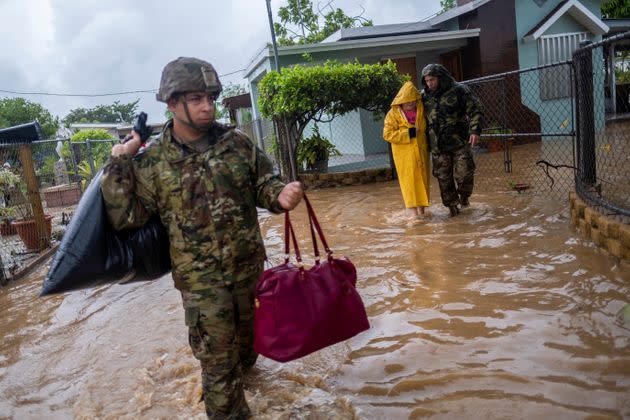
Members of the Puerto Rico National Guard rescue a woman stranded in her house in the aftermath of Hurricane Fiona in Salinas on Monday. (Photo: Ricardo Arduengo via Reuters)
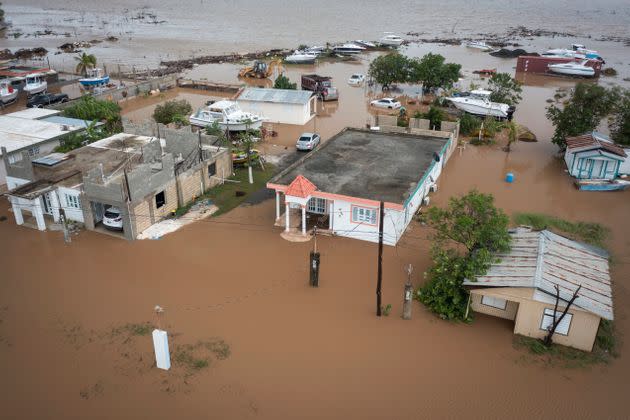
Homes are flooded Monday on Salinas Beach after Hurricane Fiona. (Photo: Alejandro Granadillo/Associated Press)
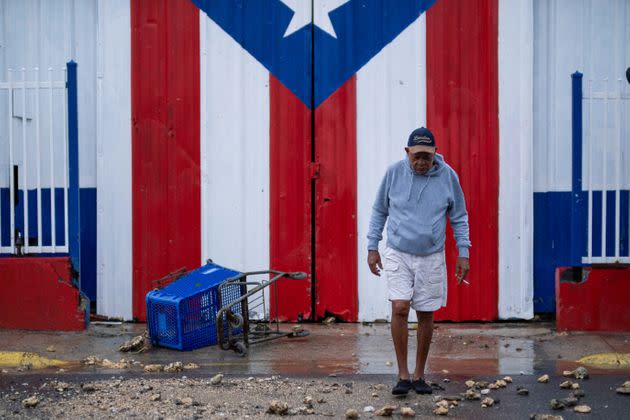
Damages in Penuelas, Puerto Rico, are still being assessed in the aftermath of Hurricane Fiona. (Photo: Ricardo Arduengo/Reuters)
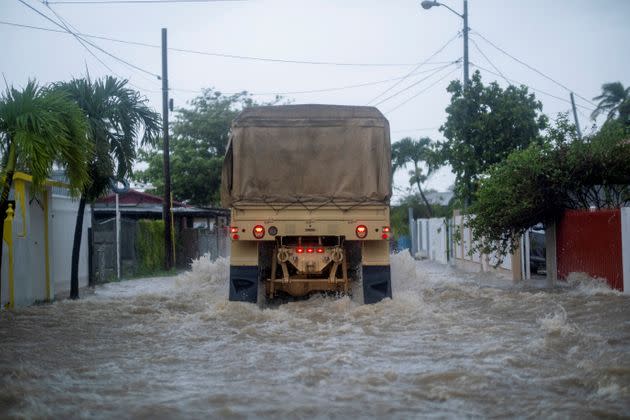
A Puerto Rico National Guard truck drives through a flooded street Monday in Salinas searching for people needing to be rescued. (Photo: Ricardo Arduengo/Reuters)
The storm prompted a state of emergency in the Dominican Republic later Monday, and one fatality was reported there. But even though the fierce winds had left Puerto Rico, officials warned residents to stay cautious and remain indoors, pointing to severe flooding and ongoing evacuation efforts.
Latest Radar Total Estimate from Hurricane Fiona (Sept 19 6 PM)
Estimados de Radar más recientes totales del Huracán Fiona (19 de sept 6 PM). #prwx#usviwxpic.twitter.com/rIhh43K5ma— NWS San Juan (@NWSSanJuan) September 19, 2022
The destruction resurfaces memories of Hurricane Maria, which struck Puerto Rico as a Category 4 storm five years ago. Maria was the deadliest storm to sweep across the island, causing more than 3,000 deaths, leaving lasting damage and creating fierce tension between the territory and former President Donald Trump.
Officials planned to modernize the Puerto Rican electric grid after Maria using federal funds, but the effort has been slow and power is still largely supplied via a patchwork system of old equipment. Billions of dollars in relief funding for recovery after that hurricane hasn’t been spent, and what has been allocated has largely gone to cleanup efforts rather than permanent works that could improve roads or utilities, The New York Times reported.
Fiona was classified as a Category 1 hurricane but still caused widespread damage, underscoring the island’s vulnerability to fierce storms that experts say will only become more frequent due to climate change.
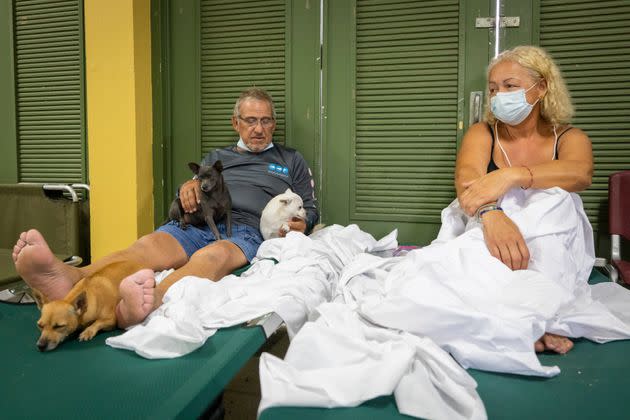
Residents affected by Hurricane Fiona rest Monday at a Salinas school being used as a storm shelter. (Photo: Alejandro Granadillo/Associated Press)
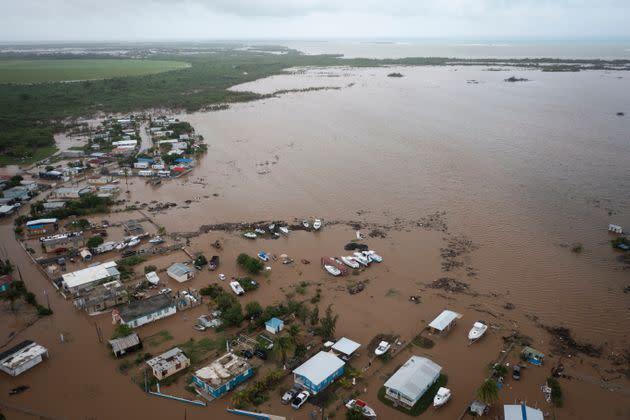
Some areas were hit with nearly 30 inches of rain, prompting severe flooding. (Photo: Alejandro Granadillo/Associated Press)
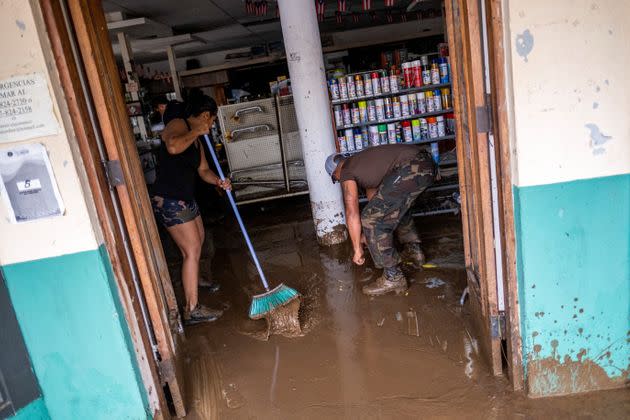
Employees remove mud from a hardware store in the aftermath of Hurricane Fiona in Salinas, Puerto Rico, on Monday. (Photo: Ricardo Arduengo/Reuters)
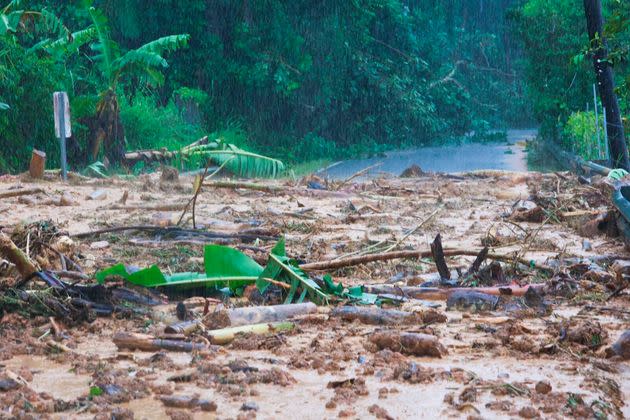
A road is blocked by a mudslide caused by Hurricane Fiona in Cayey, Puerto Rico, on Sunday. (Photo: Stephanie Rojas/Associated Press)
President Joe Biden approved an emergency declaration on Monday, ordering that federal resources be marshaled to help the island recover. The action allows the Federal Emergency Management Agency to coordinate disaster response and direct federal funding to the region.
Biden also assured Pierluisi that the government would “substantially” increase the numbers of rescue workers beyond the 300 currently there.
Power had been restored to about 100,000 people in some areas by Monday, but many parts of the U.S. territory — home to 3 million — were still without electricity, and officials warned it could be days before the lights came back on across the island.
This article originally appeared on HuffPost and has been updated.

 Yahoo News
Yahoo News 